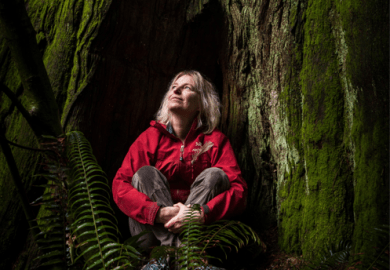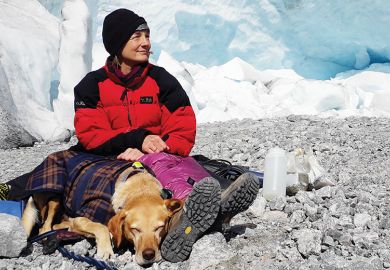In What is History ? E. H. Carr states that a major aim of any historian is to engage with the facts to create a continuous dialogue between past and present. He was talking about human history, but his argument applies equally to any geologist concerned with the history of the earth. In order to read this inanimate history, geologists must decode messages from the past recorded in layers of rock. The ways the solid earth speaks to us under geo-interrogation and the surprising and sometimes frightening answers it gives, lie at the heart of historical geology and of Stephen Drury's book.
After a brief introduction, there are seven self-contained parts that cover the gambit of chemical, biological, physical and astronomical forces that have shaped the earth's system over the past 4.5 billion years. Its scope is impressive. Drury, who lectures at the Open University, has drawn heavily from across the sciences to weave a fascinating tale of discovery, not just of the earth, but of man's place on it. Perhaps understandably, the book sometimes reads more like an OU text than a popular account, and may be too dense for the marginally interested reader. But this is not to distract from its achievement of presenting a diverse body of knowledge in a coherent way. Nor is the text without its idiosyncrasies, which would have been swiftly axed from any undergraduate earth system science module. What are we to make of Drury's account of adiabatic heat transfer in the atmosphere, where, using a balloon as an example, we find our "inanely grinning, bearded adventurer" is carried aloft in a vain attempt to fulfil his "absurd ambitions"?
Drury makes an important historical point when he derides the complacent, self-assured demeanour of geologists seemingly untroubled by a world that works in a lackadaisical, predictable way. What else could explain the uncritical rejection by the geological community earlier this century of Alfred Wegener's theory of continental drift? Revolution and catastrophe are words that even today do not fit well with the received wisdom of Lyell's gradualism, yet we now know that both have played a fundamental role in earth history.
On a more pragmatic note, Drury reminds us that modern geology has its roots firmly in the Industrial Revolution and was linked intimately with the generation of capital. The British empire needed raw materials to fuel its global expansion and geology was its servant. Such was the economic expediency that, despite tensions between religious dogma and a growing fossil record that appeared to be rubber-stamping Darwinian theory, coal was still mined and canals dug.
Climatic effects on human behaviour and anatomy are beyond doubt. Human history came about at a time when the drawdown of CO2 from the atmosphere, linked in part to tectonic motions of the earth's plates, plunged the world into a series of ice ages punctuated by warmer spells. It was during one of these warmer interglacials that the first conscious humans began to migrate from the plains of Africa into the world beyond.
The final part of Stepping Stones charts the impact of humans on the earth during the Holocene. The rapid deforestation of Europe about 5,000 years ago marks the arrival of modern man, whose history is - give or take the odd tribal skirmish down the centuries - an early agricultural economy preceded by an industrialised one, trying its hardest to keep the next ice age at bay through the addition of 2.5 x 1013 kg of CO2 to the atmosphere each year.
Drury compares the meagre funding received by earth historians with the billions of dollars spent investigating our planetary neighbours. Venus's surface has been mapped to a resolution of 100 metres, while much of our oceans and a fair part of the continents lie uncharted or covered only by scant reconnaissance surveys. In the rush to gather more information about other planets in our solar system, it is easy to forget that compared with earth the majority are geologically challenged. Gaia may be a woman with a past, but one that leaves her stellar neighbours looking barren and ugly by comparison.
Nick Petford is senior lecturer in geology, Kingston University.
Stepping Stones: The Making of Our Home World
Author - Stephen Drury
ISBN - 0 19 8501 0
Publisher - Oxford University Press
Price - £19.99
Pages - 409
Register to continue
Why register?
- Registration is free and only takes a moment
- Once registered, you can read 3 articles a month
- Sign up for our newsletter
Subscribe
Or subscribe for unlimited access to:
- Unlimited access to news, views, insights & reviews
- Digital editions
- Digital access to THE’s university and college rankings analysis
Already registered or a current subscriber?



